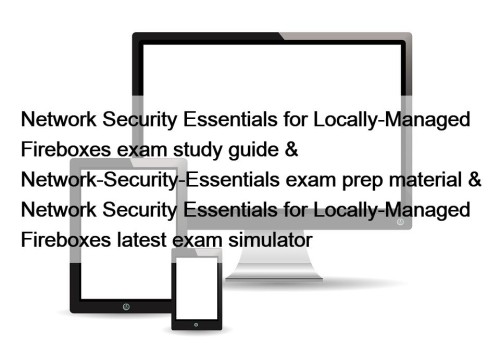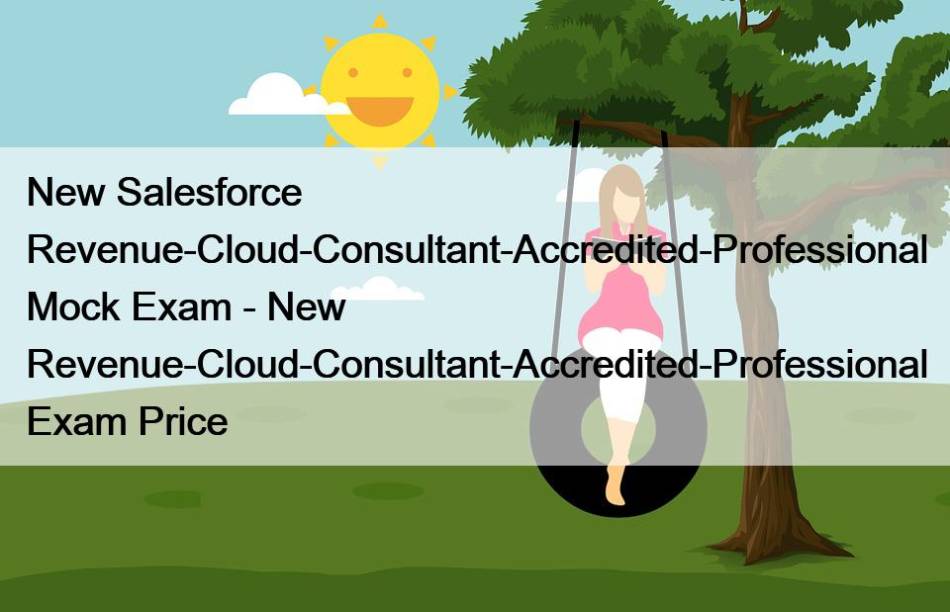Most Popular
 Don't Miss Golden Opportunity–Download UiPath UiPath-ABAv1 Dumps Now at Affordable Rates
Don't Miss Golden Opportunity–Download UiPath UiPath-ABAv1 Dumps Now at Affordable Rates
TestSimulate is driven by the ambition of making you succeed. ...
 Network Security Essentials for Locally-Managed Fireboxes exam study guide & Network-Security-Essentials exam prep material & Network Security Essentials for Locally-Managed Fireboxes latest exam simulator
Network Security Essentials for Locally-Managed Fireboxes exam study guide & Network-Security-Essentials exam prep material & Network Security Essentials for Locally-Managed Fireboxes latest exam simulator
There are three different versions provided by our company. Every ...
 2025 Latest Data-Cloud-Consultant: Reliable Salesforce Certified Data Cloud Consultant Braindumps Ebook
2025 Latest Data-Cloud-Consultant: Reliable Salesforce Certified Data Cloud Consultant Braindumps Ebook
For candidates who are going to buy Data-Cloud-Consultant study materials ...



New Salesforce Revenue-Cloud-Consultant-Accredited-Professional Mock Exam - New Revenue-Cloud-Consultant-Accredited-Professional Exam Price

In order to prevent your life from regret and remorse, you should seize every opportunity which can change lives passibly. Did you do it? ValidDumps's Salesforce Revenue-Cloud-Consultant-Accredited-Professional exam training materials can help you to achieve your success. We can help you pass the Salesforce Revenue-Cloud-Consultant-Accredited-Professional Exam smoothly. In order not to let success pass you by, do it quickly.
ValidDumps Salesforce Revenue-Cloud-Consultant-Accredited-Professional Exam Training materials can help you to come true your dreams. Because it contains all the questions of Salesforce Revenue-Cloud-Consultant-Accredited-Professional examination. With ValidDumps, you could throw yourself into the exam preparation completely. With high quality training materials by ValidDumps provided, you will certainly pass the exam. ValidDumps can give you a brighter future.
>> New Salesforce Revenue-Cloud-Consultant-Accredited-Professional Mock Exam <<
Free PDF Quiz 2025 Accurate Salesforce New Revenue-Cloud-Consultant-Accredited-Professional Mock Exam
ValidDumps online digital Salesforce Revenue-Cloud-Consultant-Accredited-Professional exam questions are the best way to prepare. Using our Salesforce Revenue-Cloud-Consultant-Accredited-Professional exam dumps, you will not have to worry about whatever topics you need to master. To practice for a Salesforce Revenue-Cloud-Consultant-Accredited-Professional Certification Exam in the ValidDumps (free test), you should perform a self-assessment. The Revenue-Cloud-Consultant-Accredited-Professional practice test ValidDumps keeps track of each previous attempt and highlights the improvements with each attempt.
Salesforce Revenue-Cloud-Consultant-Accredited-Professional Exam Syllabus Topics:
| Topic | Details |
|---|---|
| Topic 1 |
|
| Topic 2 |
|
| Topic 3 |
|
Salesforce Revenue Cloud Consultant Accredited Professional Sample Questions (Q37-Q42):
NEW QUESTION # 37
Sales reps at UC were facing governor limits while configuring certain large bundles, theadmin at UC has set the 'enable largeconfigurations package settings to TRUE now theusers are experiencing longer loading times between saving a bundle configuration andreturning to the quote line editor,even for smaller bundles.what should the admin do toresolve this issue?
- A. Enable large configurations setting should not be used in such a case
- B. Enable Large configuration on the bundle parents where needed by selecting theproduct's enable large configuration field
- C. Recommend CPQ and billing design solutions within proper capabilities
- D. All bundles thathave more than 20 product should be split into smaller bundles
Answer: B
Explanation:
Enable Large Configurations on Specific Bundles: Instead of enabling large configurations globally for all bundles, consider selectively enabling it only on the bundle parents where it is needed. By doing so, you can avoid affecting smaller bundles that don't require large configurations. This approach allows you to optimize performance while still benefiting from large configurations where necessary.
Review CPQ and Billing Design Solutions: Take a closer look at your CPQ and billing design. Ensure that your configuration models, pricing rules, and quote line editor settings are well-optimized. Sometimes, design choices can impact performance. Consider consulting Salesforce documentation and best practices to fine- tune your implementation.
Avoid Unnecessary Use of Large Configurations: While large configurations can handle complex bundles, they may not be needed for smaller bundles with fewer products. Evaluate each bundle's complexity and enable large configurations only when necessary. Avoid using it indiscriminately across all bundles.
References:
Salesforce Enable Large Configurations Documentation
Salesforce Trailhead: Understand Scalability
Salesforce Revenue Cloud Overview
NEW QUESTION # 38
What are the 3 common CPQ design mistakes to avoidwhile implementing CPQ for yourcustomer?
- A. documenting logical architecture diagrams for data flow between systems
- B. designing the product catalog with SKU rationalization in mind
- C. Writing customizations for product selection or validation instead of using optionconstraints,product rules,and bundles.
- D. Creating process buildersand flows to pass data between fields instead of using twin field mapping
- E. using price book entries to handle attribute based variations instead of lookup price rules
Answer: C,D,E
Explanation:
The three common CPQ design mistakes to avoid while implementing CPQ for your customer are:
A: Using price book entries to handle attribute based variations instead of lookup price rules: Price book entries are not designed to handle attribute-based variations. Instead, lookup price rules should be used. These rules allow you to adjust pricing based on specific product attributes, providing more flexibility and accuracy1.
C: Creating process builders and flows to pass data between fields instead of using twin field mapping:
Process builders and flows can be complex and difficult to maintain. Instead, twin field mapping should be used. This feature allows you to map fields between objects, ensuring data consistency and reducing the need for custom code1.
D: Writing customizations for product selection or validation instead of using option constraints, product rules, and bundles: Customizations can be time-consuming and costly to implement and maintain. Instead, Salesforce CPQ provides built-in features like option constraints, product rules, and bundles that can handle product selection and validation. These features are designed to enforce business rules and ensure that only valid product combinations are selected1.
References:
https://inspireplanner.com/blog/5-common-salesforce-cpq-implementation-challenges-and-how-to-avoid-them/
NEW QUESTION # 39
Which three are key steps when documenting user stories?
- A. Design the solution while the business process is being defined
- B. Identify the acceptance criteria or result for satisfying the user story.
- C. Know which business process the requirement supports to categorize the user story
- D. Document user acceptance test scripts for the user story.
- E. Identity the actor or personas in this user story
Answer: B,C,E
Explanation:
User stories are short, simple descriptions of a feature or functionality from the perspective of the end user or customer. User stories are used to capture the requirements and value proposition of a product or service in an agile framework. User stories should follow some best practices to ensure clarity, consistency, and alignment with the business goals and user needs. 12 Some of the key steps when documenting user stories are:
* Know which business process the requirement supports to categorize the user story. This helps to prioritize and organize the user stories based on the business value and impact they deliver. It also helps to avoid duplication and inconsistency among user stories. 3
* Identify the actor or personas in this user story. This helps to define the user role, needs, goals, and motivations that drive the user story. It also helps to create empathy and understanding for the user and their context. 4
* Identify the acceptance criteria or result for satisfying the user story. This helps to specify the expected outcome, behavior, or functionality that the user story should deliver. It also helps to define the scope, quality, and testability of the user story. 5 Designing the solution while the business process is being defined is not a key step when documenting user stories. This can lead to premature or biased decisions that may not address the real user problem or value proposition. User stories should focus on the what and why, not the how. The solution design should be done after the user stories are validated and prioritized, and in collaboration with the development team and other stakeholders. 6 Documenting user acceptance test scripts for the user story is not a key step when documenting user stories.
This can be done later, after the user stories are refined and detailed, and before the development and testing phases. User acceptance test scripts are used to verify that the user story meets the acceptance criteria and the user expectations. [7] References:
* 1: User Stories | Examples and Template | Atlassian
* 2: How to Write Perfect User Stories (With Templates): A Step-By-Step Guide | airfocus
* 3: 10 Tips for Writing Good User Stories - Roman Pichler
* 4: The Anatomy of a User Story | Scrum Alliance | Includes Template
* 5: Best Practices to Succeed with User Stories - DZone
* 6: UX documentation: Guide, best practices, template
NEW QUESTION # 40
You are implementing the Design Document for a large Enterprise Revenue Cloudprojecthaving multiple lookup price rules supporting a complex pricing requirement in the Buildphase. During construction the customer discovers additional logic and external datastores that need to be incorporated in order to achieve the correct pricing in a particular setof use cases. You estimate the lookup price rules will need to be modified, additional ruleswill need to be created and API development will beneeded. As an Implementationconsultant what is the appropriate course of action that should take in this predicament?
- A. Communication to the customer ongoing adjustment can be made as long as we're in the build phase.
- B. Consult with the solution Architect first who will expedite the updates to the design documents, then implement the changes immediately.
- C. Communicate these changes to the project manager who will evaluate the impact to scope, timeline and budget them determine the next course of action
- D. Implement the lookup price rules immediately then review with the solution Architect.
- E. Gather more details, if it requires a low level of effort then implement immediately before starting the next sprint, Otherwise Complete on the subsequent sprint.
Answer: C
NEW QUESTION # 41
You are implementing the Design Document for a large Enterprise Revenue Cloudprojecthaving multiple lookup price rules supporting a complex pricing requirement in the Buildphase. During construction the customer discovers additional logic and external datastores that need to be incorporated in order to achieve the correct pricing in a particular setof use cases. You estimate the lookup price rules will need to be modified, additional ruleswill need to be created and API development will beneeded. As an Implementationconsultant what is the appropriate course of action that should take in this predicament?
- A. Gather more details, if it requires a low level of effort then implement immediatelybefore starting the next sprint, Otherwise Complete on the subsequent sprint.
- B. Communication to the customer ongoing adjustment can be made as long as we're inthe build phase.
- C. Consult with the solution Architect first who will expedite the updates to the designdocuments, then implement the changes immediately.
- D. Implement the lookup price rules immediately then review with the solution Architect.
- E. Communicate these changes to the project manager who will evaluate the impact toscope, timeline and budget them determine the next course of action
Answer: E
Explanation:
According to the Salesforce Revenue Cloud Implementation Guide, any changes to the design document during the build phase should be communicated to the project manager, who will assess the impact of the changes on the project scope, timeline, and budget. The project manager will then decide whether to accept, reject, or defer the changes, and update the project plan accordingly. This is the best practice to ensure that the project is delivered on time, on budget, and with the expected quality and functionality.
Implementing the lookup price rules immediately without consulting the project manager or the solution architect could result in errors, inconsistencies, or conflicts with the existing design or other components of the solution. It could also cause delays or rework if the changes are not aligned with the customer's expectations or requirements. Therefore, option B and option E are not appropriate.
Consulting with the solution architect first could help to expedite the updates to the design document, but it would still require the approval of the project manager and the customer before implementing the changes.
Therefore, option D is not sufficient.
Communication to the customer that ongoing adjustments can be made as long as we are in the build phase could create confusion or unrealistic expectations about the project scope and timeline. It could also undermine the credibility and authority of the project manager and the solution architect, who are responsible for managing the project and ensuring the quality of the solution. Therefore, option A is not advisable.
References:
* 1: Salesforce Revenue Cloud Implementation Guide, page 17
* 2: Lookup Price Rule query considerations with Salesforce CPQ 3
NEW QUESTION # 42
......
Holding a certification in a certain field definitely shows that one have a good command of the Revenue-Cloud-Consultant-Accredited-Professional knowledge and professional skills in the related field. However, the majority of the candidates for the Revenue-Cloud-Consultant-Accredited-Professional exam are those who do not have enough spare time. But our company can provide the anecdote for you--our Revenue-Cloud-Consultant-Accredited-Professional Study Materials. Under the guidance of our Revenue-Cloud-Consultant-Accredited-Professional exam practice, you can definitely pass the exam as well as getting the related certification with the minimum time and efforts. Our Revenue-Cloud-Consultant-Accredited-Professional exam questions will never let you down.
New Revenue-Cloud-Consultant-Accredited-Professional Exam Price: https://www.validdumps.top/Revenue-Cloud-Consultant-Accredited-Professional-exam-torrent.html
- Valid Revenue-Cloud-Consultant-Accredited-Professional Exam Sample 🆗 Exam Topics Revenue-Cloud-Consultant-Accredited-Professional Pdf ⭐ Online Revenue-Cloud-Consultant-Accredited-Professional Training Materials 🔏 「 www.real4dumps.com 」 is best website to obtain ✔ Revenue-Cloud-Consultant-Accredited-Professional ️✔️ for free download 📶Revenue-Cloud-Consultant-Accredited-Professional Top Questions
- Pass Guaranteed Fantastic Salesforce - Revenue-Cloud-Consultant-Accredited-Professional - New Salesforce Revenue Cloud Consultant Accredited Professional Mock Exam 🌍 Search for ✔ Revenue-Cloud-Consultant-Accredited-Professional ️✔️ and download exam materials for free through ☀ www.pdfvce.com ️☀️ ❤Revenue-Cloud-Consultant-Accredited-Professional Valid Test Testking
- Buy Actual Salesforce Revenue-Cloud-Consultant-Accredited-Professional Dumps Now and Receive Up to 1 year of Free Updates 🛤 Download ➥ Revenue-Cloud-Consultant-Accredited-Professional 🡄 for free by simply entering { www.prep4pass.com } website 🤖Revenue-Cloud-Consultant-Accredited-Professional Materials
- Online Revenue-Cloud-Consultant-Accredited-Professional Training Materials 💈 Revenue-Cloud-Consultant-Accredited-Professional Top Questions 🔹 Valid Revenue-Cloud-Consultant-Accredited-Professional Exam Sample 💭 Simply search for ( Revenue-Cloud-Consultant-Accredited-Professional ) for free download on ⇛ www.pdfvce.com ⇚ ⚽Valid Revenue-Cloud-Consultant-Accredited-Professional Exam Sample
- Revenue-Cloud-Consultant-Accredited-Professional Learning Materials 🤵 Reliable Revenue-Cloud-Consultant-Accredited-Professional Guide Files 😵 Revenue-Cloud-Consultant-Accredited-Professional Materials 🐺 Immediately open ⇛ www.examcollectionpass.com ⇚ and search for [ Revenue-Cloud-Consultant-Accredited-Professional ] to obtain a free download 🥾Latest Revenue-Cloud-Consultant-Accredited-Professional Training
- Hottest Revenue-Cloud-Consultant-Accredited-Professional Certification 🤝 Revenue-Cloud-Consultant-Accredited-Professional Learning Materials 🏳 Pdf Revenue-Cloud-Consultant-Accredited-Professional Dumps 🌙 Search for ✔ Revenue-Cloud-Consultant-Accredited-Professional ️✔️ on ➤ www.pdfvce.com ⮘ immediately to obtain a free download 🚃Revenue-Cloud-Consultant-Accredited-Professional Latest Test Dumps
- 2025 Trustable New Revenue-Cloud-Consultant-Accredited-Professional Mock Exam | 100% Free New Revenue-Cloud-Consultant-Accredited-Professional Exam Price 🤞 Enter ⮆ www.passtestking.com ⮄ and search for ➤ Revenue-Cloud-Consultant-Accredited-Professional ⮘ to download for free 💯Revenue-Cloud-Consultant-Accredited-Professional Valid Test Online
- 2025 Trustable New Revenue-Cloud-Consultant-Accredited-Professional Mock Exam | 100% Free New Revenue-Cloud-Consultant-Accredited-Professional Exam Price 🦃 Search for ⮆ Revenue-Cloud-Consultant-Accredited-Professional ⮄ and download it for free on ➽ www.pdfvce.com 🢪 website 🔏Revenue-Cloud-Consultant-Accredited-Professional Materials
- 2025 Trustable New Revenue-Cloud-Consultant-Accredited-Professional Mock Exam | 100% Free New Revenue-Cloud-Consultant-Accredited-Professional Exam Price 🤖 Open “ www.exams4collection.com ” enter ➽ Revenue-Cloud-Consultant-Accredited-Professional 🢪 and obtain a free download 👡Revenue-Cloud-Consultant-Accredited-Professional Pdf Torrent
- Buy Actual Salesforce Revenue-Cloud-Consultant-Accredited-Professional Dumps Now and Receive Up to 1 year of Free Updates ❎ Search for 《 Revenue-Cloud-Consultant-Accredited-Professional 》 on ➥ www.pdfvce.com 🡄 immediately to obtain a free download 🌘Revenue-Cloud-Consultant-Accredited-Professional Examcollection Vce
- Revenue-Cloud-Consultant-Accredited-Professional Latest Test Dumps 🐻 Latest Revenue-Cloud-Consultant-Accredited-Professional Training 🍟 Revenue-Cloud-Consultant-Accredited-Professional Top Questions 🚴 Search for ▛ Revenue-Cloud-Consultant-Accredited-Professional ▟ and obtain a free download on [ www.dumpsquestion.com ] 🆘Hottest Revenue-Cloud-Consultant-Accredited-Professional Certification
- Revenue-Cloud-Consultant-Accredited-Professional Exam Questions
- kelas.syababsalafy.com www.zsflt.top bsxq520.com tebbtakamuli.com nextlevel.com.bd myelearning.uk www.mukalee.com magickalodyssey.com yahomouniversity.com skyhighes.in
Tags: New Revenue-Cloud-Consultant-Accredited-Professional Mock Exam, New Revenue-Cloud-Consultant-Accredited-Professional Exam Price, Revenue-Cloud-Consultant-Accredited-Professional Exam Success, Pdf Revenue-Cloud-Consultant-Accredited-Professional Pass Leader, Authorized Revenue-Cloud-Consultant-Accredited-Professional Exam Dumps